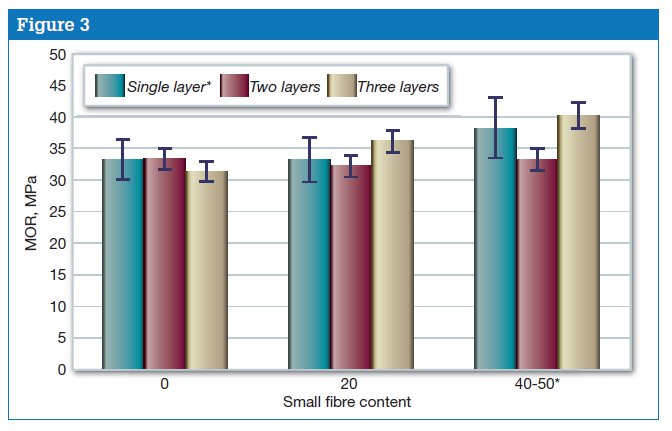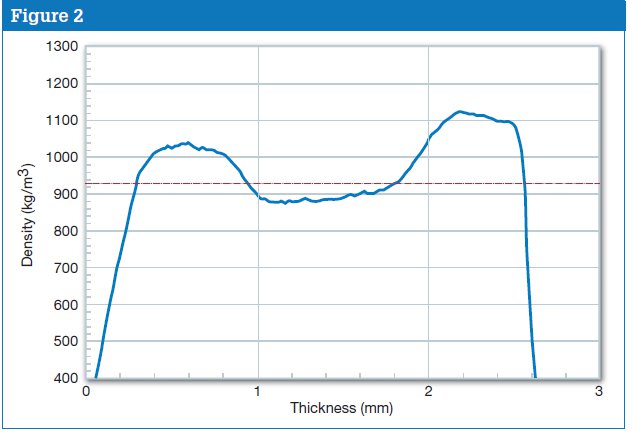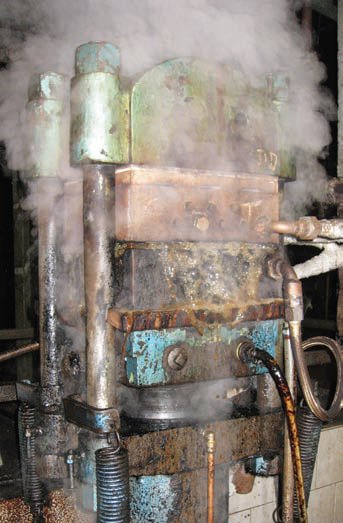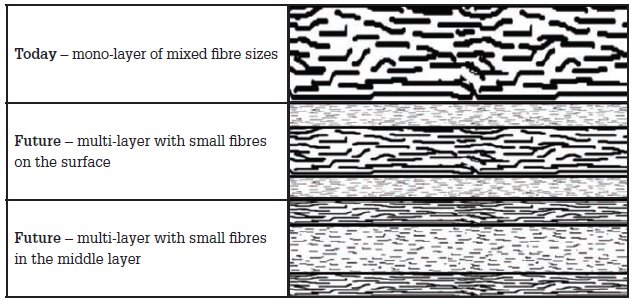Rethinking fibreboards
16 June 2015Our regular correspondent, Dr Mark Irle, describes some research carried out by his students at Ecole Supérieur du Bois, Nantes, France, to determine the effect of using paper-making technologies in fibreboard production
Plywood, OSB and particleboard are all multi-layer products by design. The multi-layer aspect gives manufacturers some control over the mechanical and physical properties of their products. Wood based fibreboards, such as MDF and hardboard, on the other hand, are almost invariably made as single-layer products.
There are some exceptions: some hardboard manufacturers apply a thin layer of finely ground pulp to the top surface to help achieve a dense and smooth face; some softboards (low density fibreboards) are made with a thin layer of bleached pulp to give a white face; and some MDF manufacturers are making three layer panels because they wish to use dry fibre blending for the core layer. In the first two exceptions, the additional layer is thin relative to the bulk of the panel, while in the MDF exception, the fibres in the core and surface layers are, essentially, identical. One part of the recently finished European-funded BoostEff project (www.boosteff.com) was to explore the potential of transferring paper-making technologies to the fibreboard industries. One technique that the paper industry has is fibre size classification. Sorting a pulp into fine and coarse fractions would give the opportunity to make panels with fine fibres on the surface, as in particleboards, or coarse fibres in the surface layers, as in OSB (see Figure 1).
The multi-layer structure of the panels is likely to confer different mechanical and physical properties to the final product. My PhD student, Elena Tikhonova, and co-worker Michael Lecourt of the FCBA in Grenoble, made a series of hardboard panels with a range of different structures.
The panels were made at laboratory scale by stacking and pressing three circular mattresses (webs). These webs were made from a pulp slurry, using a paper hand sheet former. The three webs were stacked together, cold pre-pressed to remove some of the water and then hot-pressed at 180°C for 6.5 minutes, with a peak pressure of 5MPa on the panel surface (see Figure 5). The resultant panels were approximately 2.5mm thick and had an average density of 1000kg/m3, which is typical for a hardboard-type product.
Placing small fibres in the surface increases the surface layer density (Figure 2), which in turn seems to improve bending properties. To be honest, we expected that the larger fibres would give the higher bending strength as is the experience with OSB.
In addition, surface smoothness and uniformity are improved (see Figure 3). Eagle-eyed readers will have noticed the slightly lower bottom surface density as indicated by the left hand side peak. This is caused by the fact that the panels are pressed on a wire mesh to help the water to escape in the early stages of hot pressing; and the steam in later stages. The mesh leaves an imprint and this reduces the average density of the outer surface.
This research was conducted on wet process hardboards, but the same technique could also be applied to MDF panels, using air or sieving techniques to classify fibres. Many existing MDF lines already have two forming heads because of the low bulk density of the fibre, so adding a third might be possible. Whether the additional investment is worthwhile requires more research, which is what us researchers always say at the end of a project!
If anyone out there wishes to sponsor the next stage, then please let me know.
 Fig 3: The effect of panel structure and fibre size on the bending strength of hardboards. Note that the single layer boards contained up to 50% fine fibres whereas the multi-layer panels contained a maximum of 40%
Fig 3: The effect of panel structure and fibre size on the bending strength of hardboards. Note that the single layer boards contained up to 50% fine fibres whereas the multi-layer panels contained a maximum of 40%



